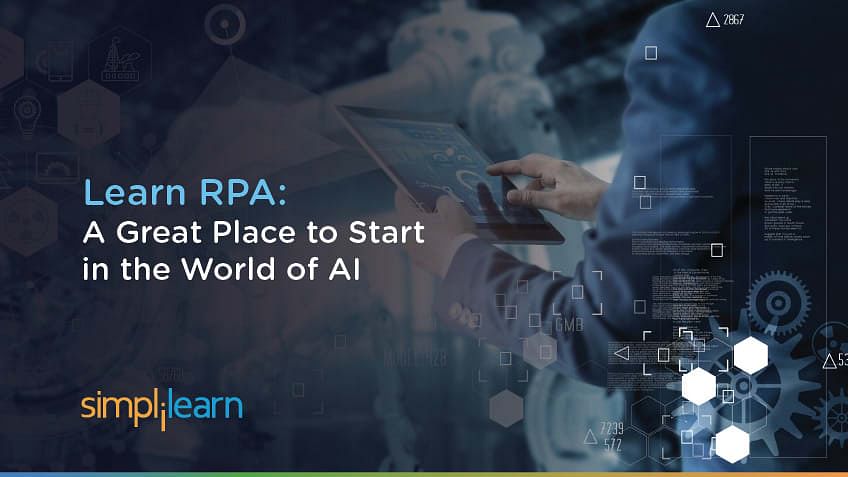A lot of companies are talking the talk when they bring up artificial intelligence (AI) and all the benefits it can bring to their organizations. But the reality is that with the AI field so vast, many line of business leaders don’t quite know how to get started. That’s where robotic process automation (RPA) comes into play. RPA offers a great opportunity to “dip your toes in the water” with AI, starting first with automating common tasks and moving on to other more advanced cognitive disciplines later. It’s not to say RPA is less sophisticated; rather, it provides a good starting point to see how your organization will adapt to process changes.
The RPA Market
RPA enables IT groups to configure software “robots” to capture data and perform routine tasks, such as automated emails to respond to common requests or streamlining process flows and business operations. The RPA market is getting heated, according to Forrester, who projects the RPA market, while only $250 million in 2016, will grow to $2.9 billion in 2021. That may be a drop in the bucket in the overall AI market of $48.5 billion, but it is an increasing portion that can help enable the digital workforce.
Over 70 percent of the business leaders questioned by the Institute for Robotic Process Automation and Artificial Intelligence Survey said that they plan to invest more in the implementation and development of RPA in 2018.
The Easiest and Least Expensive Place to Start
According to a Harvard Business Review study on AI, RPA is the least expensive and easiest to implement of the cognitive technologies in the AI realm and typically brings a quick and high return on investment. Of 152 projects studied, the most common type was the automation of digital and physical tasks, which RPA is best suited for. Streamlining the transfer of data across systems, updating records, and reconciling financial transactions, for example, are easy process-related to begin with AI. More cognitive-intensive technologies in the AI space, including machine learning and deep learning, produce deeper cognitive insights and may require a strategic investment that many companies would prefer to avoid early on.
Also, RPA doesn’t have to replace other systems. Rather it can complement them. RPA automates common back-office operations like financial processing, procurement and IT automation, which can all be enhanced by allowing automated bots to do most of the heavy lifting for their human counterparts. RPA software, unlike standard IT automation, can be aware and take on the changing circumstances, exceptions, and new situations. Once the digital data has is collected, RPA software can access multiple data, originate responses, start further actions, and communicate with other systems as if on autopilot.
RPA Doesn’t Mean Fewer Humans
One of the more controversial topics with regard to AI and RPA is the notion that intelligent bots may eventually replace human resources for many critical tasks. After all, if RPA can perform routine tasks much faster and reduce the cost of transactional processes by 50 to 75 percent, then the need for live workers diminishes, it is argued. However, according to another Harvard Business Review report that spanned 71 RPA projects, replacing administrative employees was neither the primary objective nor a common outcome in 47 percent of the total. Only a few projects led to reductions in headcount, and in most cases, the tasks in question had already been shifted to outsourced workers. What we do know is that when any automation technology is employed, it has the ultimate benefit of freeing workers up to focus on more value-added tasks, including business analysis, operational planning, and improved customer service, just to name a few examples.
Skills Training for RPA and AI Technologies
Companies that want to hit the ground running with RPA can turn to a new generation of online skills training options. RPA certification training gives learners an overview of RPA concepts, RPA tools, and workflows used in intelligent automation, and steps for implementing RPA in different segments of the enterprise.
And as our premise indicates, RPA is just the beginning of the AI journey. The broader spectrum of AI will have an even bigger impact on your company’s operations. Skills training is also available for AI engineers who are trained to create practical applications using a wide range of intelligent agents; machine learning experts trained in mathematical and heuristic techniques to develop machine learning algorithms; and deep learning specialists who understand how to apply deep neural network research.
Now that RPA has made its mark on business operations, managers and executive teams should feel comfortable employing these intelligent agents to build more prosperous businesses. The promise of AI is tremendous, and for those who would rather move slowly, RPA is the perfect place to start.

